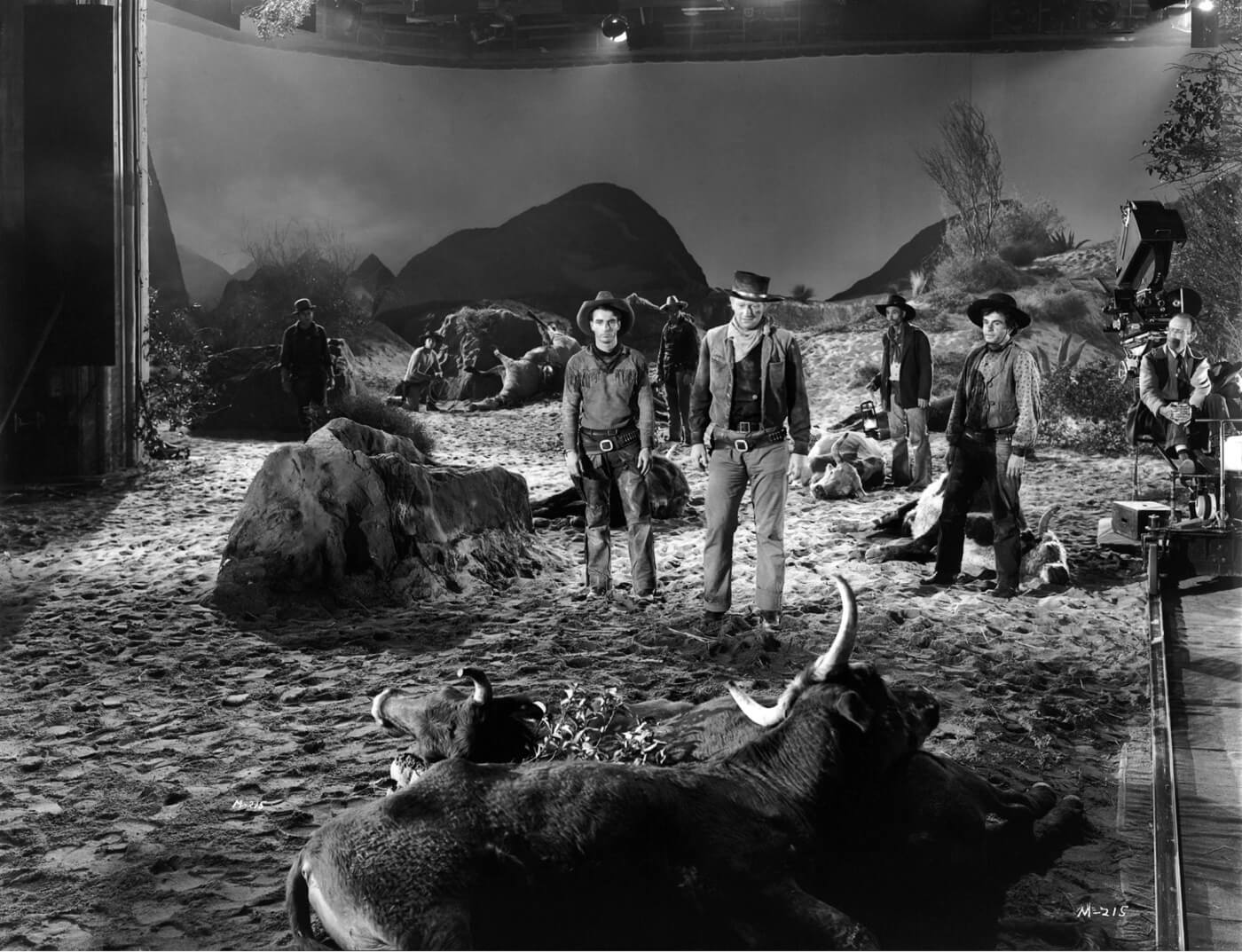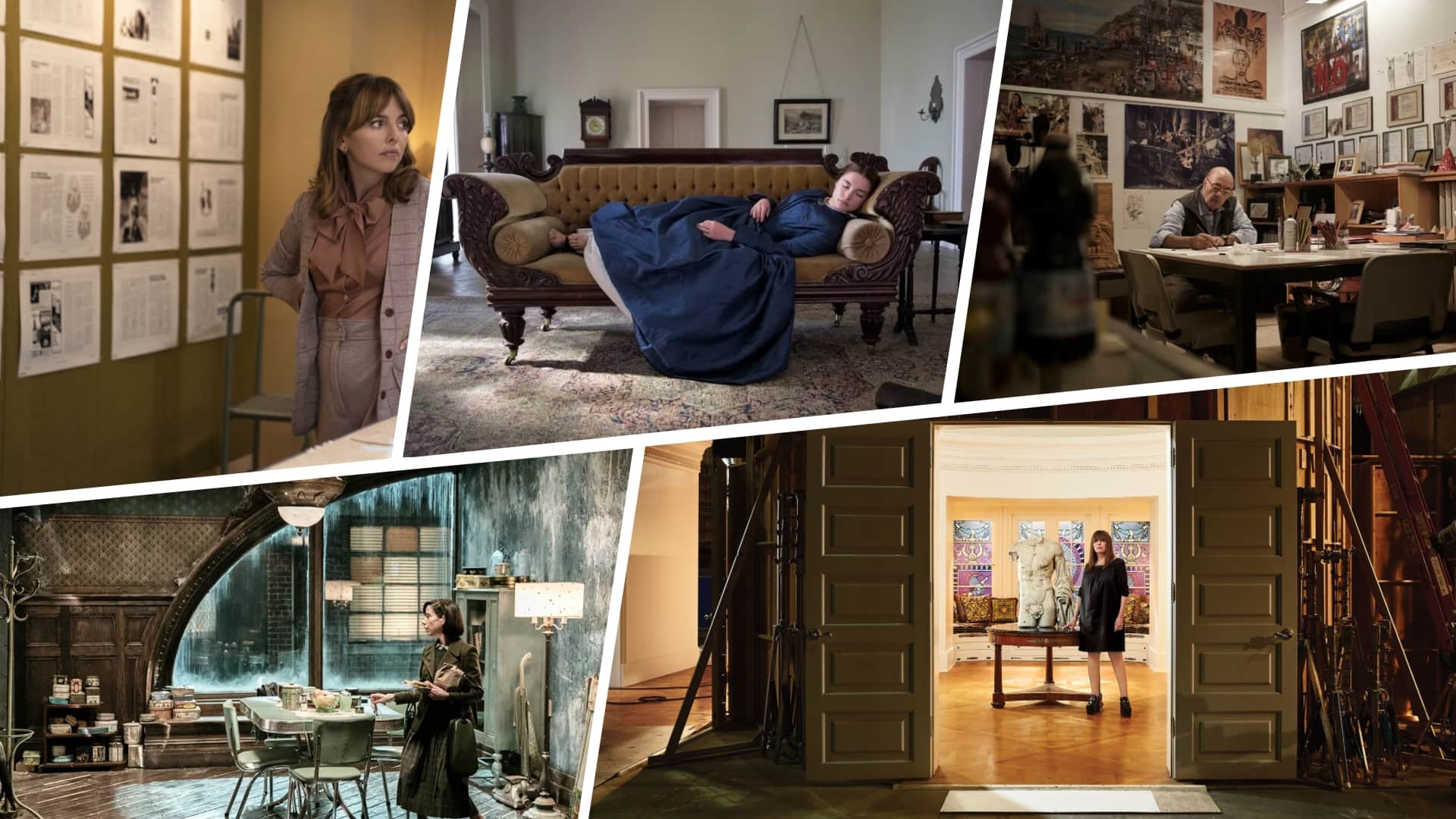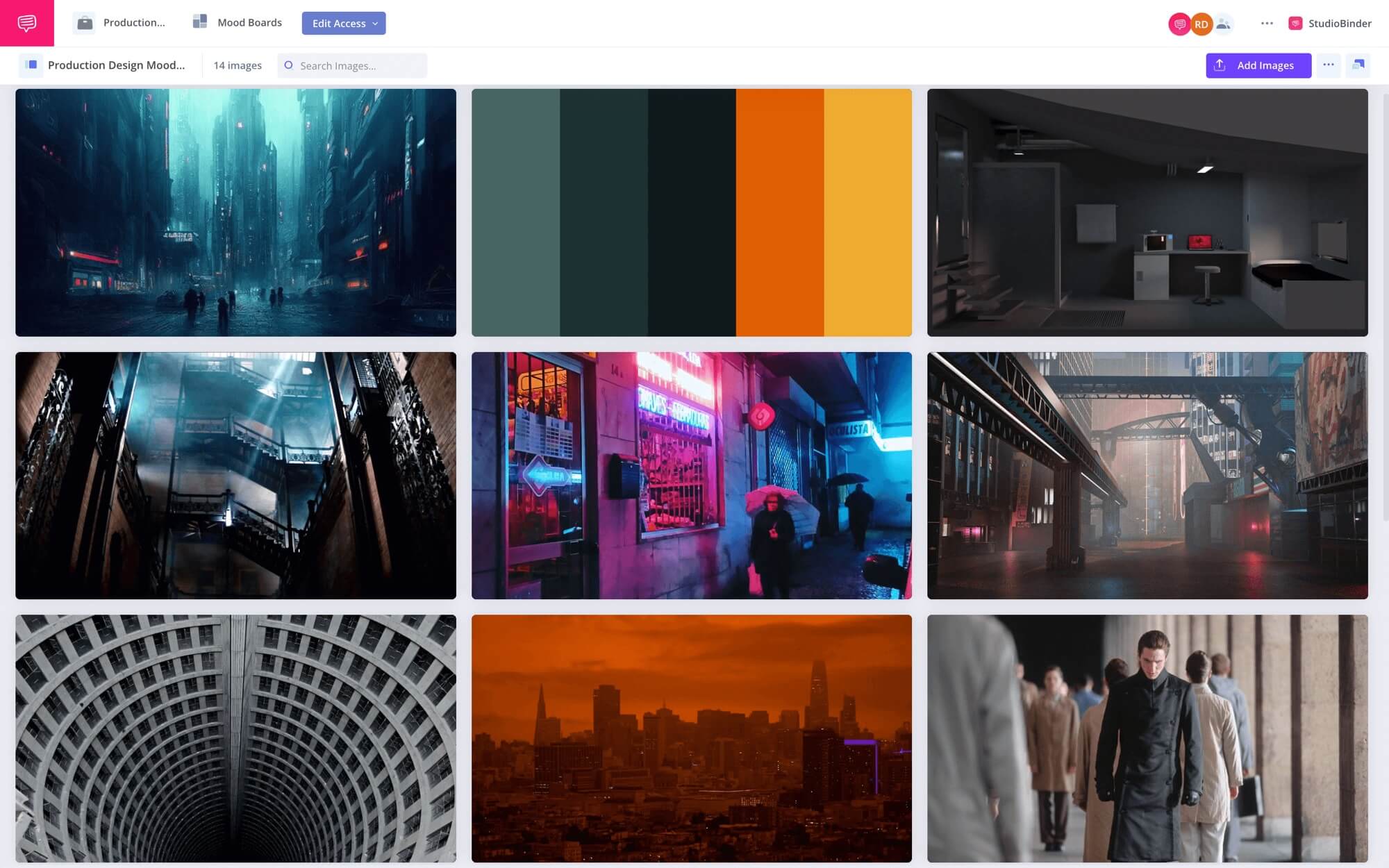When we watch a movie, the visuals that we see on the screen can either transport us to a different world or make us feel like we are simply watching a movie set. That is where production design comes in. Production design is an essential part of filmmaking, responsible for creating the look and feel of the film’s world, ensuring that it feels authentic and believable. In this blog, we will take a closer look at the production design definition as well as what elements make for great production design in a film.
What is Production Design in Film and Story?
First, let’s define production design
Simply put, production design is the art of creating the visual environment where the story takes place. But let’s take a more detailed look at the production design definition to understand its importance more fully.
PRODUCTION DESIGN DEFINITION
What is a production design?
Production design refers to the process of creating the visual environment in which a film or a television show unfolds. It is often used interchangeably with the term 'art direction.' Still, while art direction is mainly responsible for making the visual elements match the director's vision, production design goes much further, having a more elaborate approach to set design, costume design, props, and overall look and feel of a film or TV show.
Key elements of film production design:
- Set design
- Props
- Costumes
- VFX/Special Effects
What is Production Design in Film Used For?
Differentiating Production Design
As we alluded to above, there can be some confusion between production design and a few other similar departments. Let’s dive into the key differences.
Production design vs set design
Set designers work primarily with sets (surprise, surprise). Their job is to work with the director and the production designer to create believable sets which are appropriate for the film.
Set designers will get deep in the weeds of the set, looking into what needs to be planned, obtained, and built for a given environment.
Essential guide to production design
Production designers, meanwhile, are more high-level. While a production designer will work closely with a set designer to nail down the look of a set, the production designer is responsible for thinking about how this set will fit into the overall aesthetic of the film.
Production designer vs art director
An art director is a production designer’s best friend. The crucial difference between the roles is logistics. A production designer may have hundreds of lofty ideas for the look of a film; it’s the art director’s job to make it happen.
Building a set
Think of the art director as the production designer’s translator. The art director hears what a production designer wants, and then puts together the team and materials to create it – this may be anything from overseeing set construction to budgeting prop creation.
What is Production Design in Film Used For?
Importance of Production Design
The importance of production design in filmmaking lies in how it can add depth and texture to a movie, breathing life into the story and transporting the audience to a different time or world. Having consistent production design can ensure that the audience remains invested in the film, as it subconsciously strengthens the suspension of disbelief.
In this video analysis, we break down production design in the show The Boys and how production design elements like wardrobe, props, and set design create a world that is grounded in ours, but one uniquely its own.
How Production Design is a Superpower • Subscribe on YouTube
Good production design also adds another layer to the storytelling, how the characters interact with the environment and the objects around them serve to communicate character motivations and emotions without spelling it out for the audience.
Here’s a sample mood board a production designer may come up with for a dystopian neo-noir:
Production Design Examples
Note that the production design is concerned with setting, color, costume, and more. At its core, production design serves to provide the narrative with visual information that is as important as dialogue or characterization.
Production Design Meaning in Film History
History of Production Design
The history of production design can be traced back to the early days of cinema, but production design began to take on a more apparent and essential role in the 'Golden Age' of Hollywood in the 1920s and 1930s.
Evolution from Stage to Screen
Initially, the art direction for films was heavily influenced by the conventions of stage production design, set pieces were designed to be seen from a specific angle and only existed on camera for the duration of the shots for which they were designed.
There were no practical considerations about how the set would operate in the real world or how the characters would interact with the environment.

Red River, Montgomery Clift and John Wayne on the studio set together (1948)
With an increase in more advanced filmmaking methods and a desire for a more immersive experience, film productions started to demand more elaborate and realistic sets. Stagecraft evolved into filmmaking, with designers adapting the art of set design for the silver screen.
Advancements in Technology and its Impact on Production Design
As technology advanced in the field of special effects and computer-generated imagery (CGI), production design underwent another revolution. With the development of new materials and modern methods of constructing sets and props, we started seeing more ambitious designs that could match the film's narrative ambitions.

Marvel CGI Set and Production Design
In 1993, production design was given an Academy Award for the best achievement in art direction for the first time, and the following year's Oscars split the categories into Academy Awards for Production Design and Scenography to recognize every integral facet's contribution to what we now know as Production Design.
Related Posts
Characteristics of Film Production Design
Elements of Production Design
In production design, the production designer is the head of the art department on a film set, responsible for creating the visual identity of the movie. They work closely with the director and cinematographer to translate the script into a visual world through the use of sets, props, costumes, and other elements.
Let’s explore some of the most important elements a production designer must think about and how they work together to create the immersive worlds we see on screen.
Set Design: Creating the Physical Environment
One of the most crucial elements of production design is set design: designing and constructing the physical environment for the film or TV show. The designer must create an environment that is convincing and believable, supporting the story and the emotional tone of the film.
The set must establish the location and the era, adding to the mood and feel of the narrative. This video analyzes how production design was an important aspect to establishing the character arcs of the two main characters in Noah Baumbach’s Marriage Story.
Space & Separation: MARRIAGE STORY Production Designer Jade Healy
Props: Selecting and Placing Relevant Objects
Props are all the objects that surround the characters in the film. They are objects that are so integral to the story that they need to be included for completeness. A production designer must choose the right props, considering the story, the time, and the character's profile.
The placement of the prop and how the actor interacts with it can say a lot about a character, their personality, and even reveal their backstory or motivations.
Costumes: Dressing Actors Appropriately
Part of a production designer's job is to ensure that the costumes for the characters are authentic and consistent with the narrative's world. Costumes can say a lot about a character, where they come from, their social status, their personality, and their profession.
Below you can see Mark Bridges’ meticulously researched design work through sketches featured on his personal website for There Will Be Blood, one of Paul Thomas Anderson’s best films.

Mont Sainte-Victoire (c.1895) by Paul Cezanne
Special and Visual Effects: Enhancing the Visuals
Special and visual effects are often used to enhance the story and reinforce the production design. They are created with the help of technology and computer-generated imagery, adding detail and realism that would otherwise be impossible to achieve.
For films like Christopher Nolan’s Inception, VFX is a major part of production design and story. We recreated a scene from the film below showing the various VFX elements used to create the scene.
Inception VFX Breakdown • Subscribe on YouTube
Production design is an essential aspect of filmmaking that goes beyond creating a visually appealing set. It influences the mood, tone and atmosphere of the film, and helps to tell the story in a compelling way.
A skilled production designer collaborates with the director, cinematographer, costume designer, and other key members of the crew to create a cohesive and immersive world that draws the audience in. By understanding the importance of production design, filmmakers can elevate their craft and create unforgettable experiences that captivate audiences for years to come.
Up Next
What Does a Production Designer Do?
All of the elements of production design we talked about in this article are directly linked to the role of the production designer. For a deeper dive into the role of the production designer and their importance in filmmaking, check out our next article.
Up Next: Production Designer Duties →
Share your vision with elegant shot lists and storyboards.
Create robust and customizable shot lists. Upload images to make storyboards and slideshows.

